General Anders made it seem impossible. Out of thousands of emaciated labor camps, in almost inhuman conditions, he created an efficient and formidable fighting force. Our new, Soviet "ally" did not make this task easier for him.
In June 1941, the Third Reich invaded the USSR and Stalin's empire found itself on the side of the allied states. On July 30 in London, the Polish prime minister in exile, General Władysław Sikorski, concluded an agreement with the USSR ambassador to Great Britain, Ivan Majski. One of its decisions was the creation of the Polish army in the Soviet Union.
On August 4, General Władysław Anders, who was to be the commander of this new army, was released from the prison in Lubyanka. On August 12, the so-called amnesty for Poles imprisoned in the USSR. The gates of labor camps and prisons for thousands of soldiers and civilians have opened detained there since the invasion of September 17, 1939
Siberian odyssey of Poles
Thousands of Poles did not know about the amnesty at all. Labor camp authorities have often concealed this ordinance or ignored it . It happened that only people who were sick or physically handicapped were fired, and the healthy and the strong were kept, not wanting to get rid of the free labor force. In order to counteract this practice, a special unit was established at the Polish staff, the so-called Care Office. Its task was to collect information from Poles arriving in the army about Polish citizens still in labor camps.
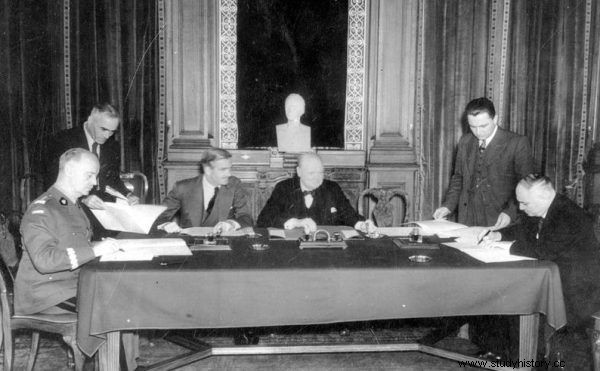
Signing of the Sikorski - Majski agreement. From left to right:Władysław Sikorski, Anthony Eden, Winston Churchill, Iwan Majski (photo:public domain).
Name lists were prepared from these data and sent to the Polish embassy. The latter, in turn, intervened with the Soviet authorities in the case of specific persons. In this way, it was possible to get, among others, Colonel Nikodem Sulik, later commander of the 5th Kresowa Infantry Division, and Bronisława Koniecouchowa, organizer of the Women's Auxiliary Service.
Many recruits on their way to the Polish army had to travel thousands of kilometers . In the book "Trail of Hope" Norman Davies quotes the story of the last president of the Republic of Poland in exile, Ryszard Kaczorowski:
After a long journey that took him to the Pacific port of Magadan and from there by boat to the devastating Kolyma camps and the gold-bearing lands of Yakutia, he arrived in the mid-1940s with over 300 deported to Northeast Siberia. (...) a year after his deportation, he was returning from Siberia with only 18 survivors .
Supply problems
The candidates for Anders' army themselves presented a picture of poverty and despair. Worn out by many months of work in inhuman conditions, malnourished, lice-laden, consumed with diseases, dressed in torn rags, they qualified more for hospitalization than for the army.
I feel heartfelt hugged - recalled General Anders - when looking at these paupers, I asked myself whether they would be able to create an army and will they be able to endure the awaiting hardships of war .
Social conditions in the military camps did not resemble those of pre-war Poland in any way. The camp in Totskoye, for example, consisted of a few shabby wooden houses without any heating and old Soviet military tents on the bare steppe. The small number of boilers meant that the kitchens prepared meals 24 hours a day. Due to the lack of food utensils, huge lines for bowls and spoons were formed. The food allocation, albeit of good quality, was clearly inadequate. Due to the common avitaminosis, the shortage of fresh vegetables and fruit was a problem.
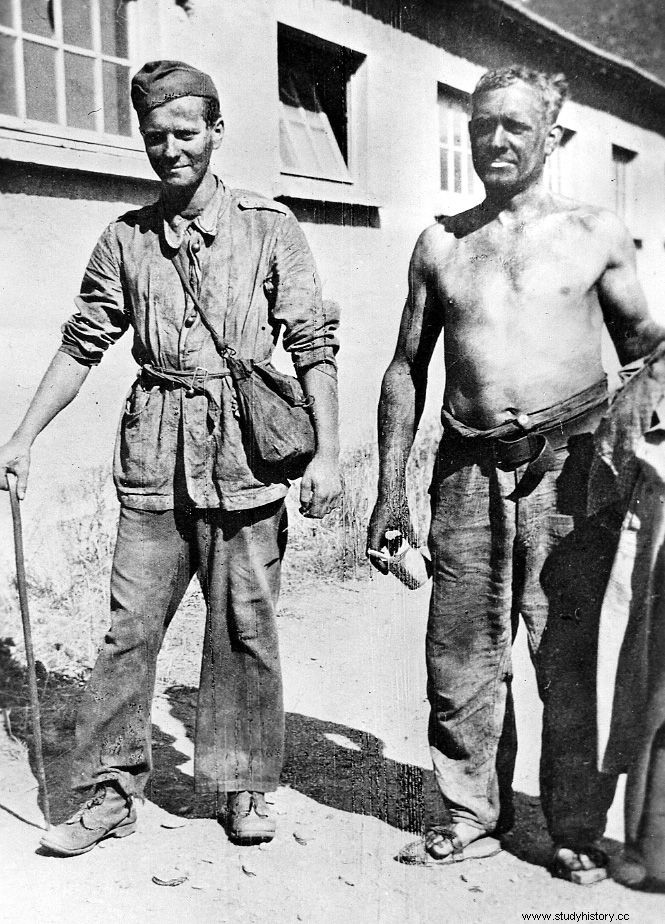
Volunteers for Anders' army shortly after his release from the camps (photo:public domain).
The situation was similar with regard to the supply of cleaning products. There was nothing to wash or wash in. Clothes were also missing, and the Soviets provided a small number of uniforms to the Latvian and Estonian armies. Some of them, richly decorated parade uniforms, made an almost grotesque impression against the background of the ubiquitous mud, rags and dirt .
Until the beginning of November, about 60% of the soldiers did not have shoes. Its insufficient number meant that the soldiers took turns wearing shoes:those leaving the service gave them to their colleagues who replaced them.
100 rifles for 10 thousand. people
The military also did not receive enough of the promised weapons. The first exercises were carried out with wooden dummy rifles and cannons . The Soviets accelerated the arming of the Polish troops only when there was a plan to use them at the front. Nevertheless, only one, 5th Infantry Division was successfully equipped.
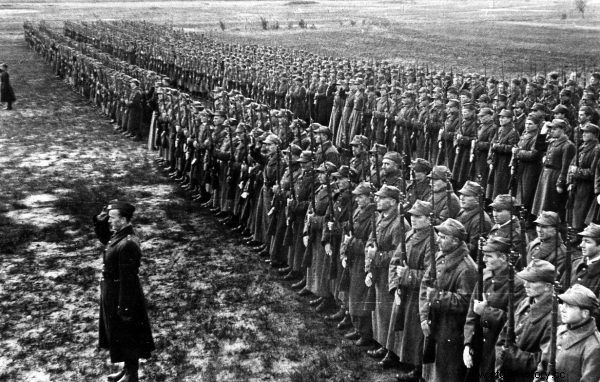
Polish soldiers in Russia at the beginning of 1942 (photo:public domain).
6th Infantry Division for about 10,000. people, she only had 100 rifles. One cannon from the 5th Division was also borrowed for the duration of the training. There was a permanent shortage of ammunition, the soldiers received only 120 rounds per rifle and 60 per cannon, which was actually enough only for training purposes. There were no anti-tank weapons of any kind.
It was the same with the means of transport. The divisions received only 10 trucks, artillery was pulled by horses. The Poles later wrote in their reports that the animals were in poor condition, and the small number of cars was not the result of equipment shortages, but insufficient fuel supply.
Fight for survival
No wonder then that when the Soviets asked the Polish side to send the 5th Division to the front, they were refused. Its commander, gen. Mieczysław Boruta-Spiechowicz, assessed the combat value of the unit subordinate to him as follows:
In the current situation (...) it is rather a working division, not a combat one, because most of the efforts are spent on building dugouts, working in forests, hauling trees, forage . food (...). These works are performed by people with such clothes and shoes. People without shoes and coats remain in tents, and only a small part of the units can be trained (...).
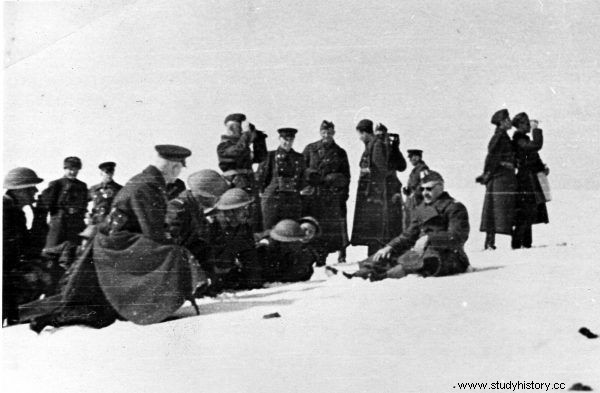
Gen. Władysław Anders (seated on the right) surrounded by Polish and Soviet officers, winter 1941/1942 (photo:public domain).
In other words, the soldiers were more involved in the fight to secure their basic living needs than in raising their combat qualifications. Nevertheless, the Soviets cut the Poles' food rations. The worst was yet to come.
Tragic Winter
The winter of the turn of 1941 and 1942 was very hard. Huge frosts, down to -57 degrees Celsius, took a rich, deadly toll among Poles exhausted by work and diseases. The dugouts and the tents covered with earth were a poor shelter, people literally froze in them.
The shortage of iron stoves meant that Poles built primitive stoves of bricks and sheet metal. Basic tools such as axes and saws were also missing. Firewood was pulled from the forests several kilometers each with human teams . Sometimes whole troops carried fuel on their backs.
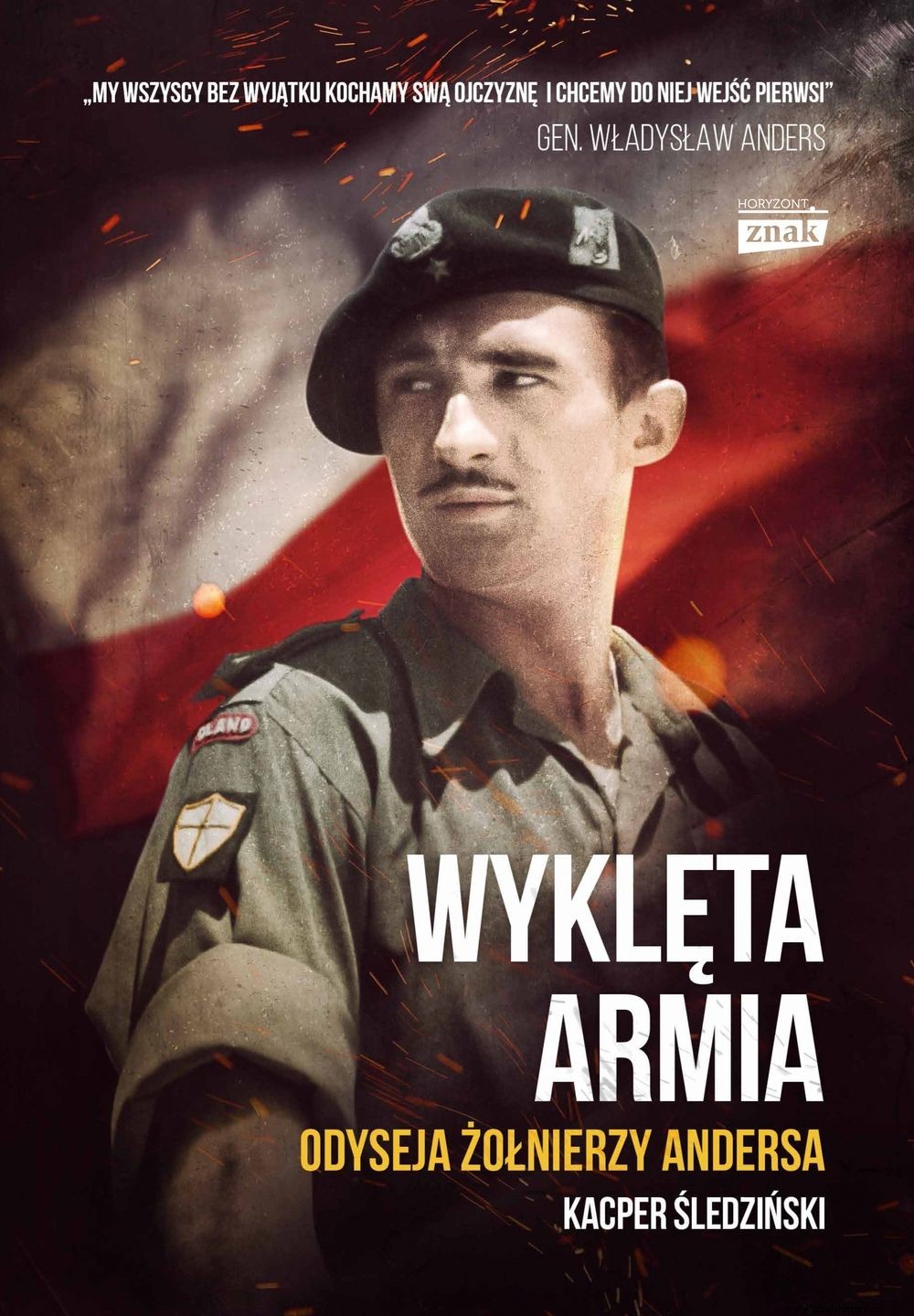
You will learn about the fate of General Anders' soldiers thanks to the book by Kacper Śledziński entitled "The Accursed Army" (Znak Horyzont 2017).
Despite extremely difficult conditions, the Anders Army continued to increase in numbers. Masses of Poles poured into the Polish camps, not only men, but also women and children. For them, it was often the only chance to survive on "inhuman soil." According to Polish estimates from December 1941, up to 150,000 soldiers could be armed. soldiers. It was decided to organize more divisions, their total number was to increase to six.
In January and February 1942, Anders' Army was moved to the southern republics of the USSR, where more favorable climatic conditions were expected. There, Poles suffered from the tragic typhus epidemic, with 300 to 400 deaths a month.
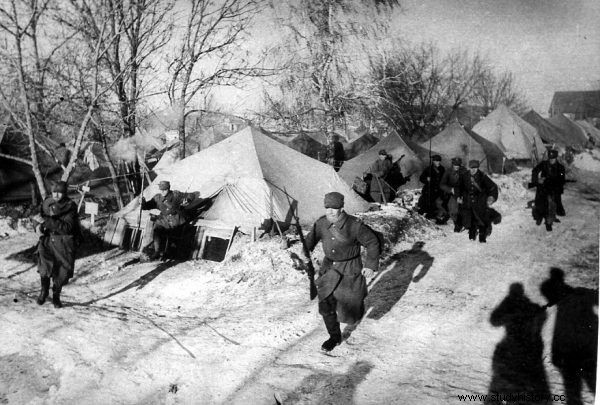
The camp of Polish soldiers in Totskoye, winter 1941 (photo:public domain).
In March and August 1942, Polish troops and civilians were evacuated to Persia. Norman Davies quotes in the "Trail of Hope" memories of Colonel Rudnicki, who described the reactions of sick soldiers to the news of the possibility of leaving the USSR:
(...) jumped off their beds, simulated healthy ones, just not to stay, just to leave and save themselves. (...) The sick man smiled, his friends took him by the arms, discreetly supported him during the pre-loading inspection and finally pushed him into the carriages, where one of them collapsed on the floor, but he was happy that he was going, that he would not stay.
In the places where the Polish Army was last stationed in the USSR, in Uzbekistan and southern Kazakhstan, there are 3,000 graves left. soldiers and 10,000 civilians who were no longer saved.
